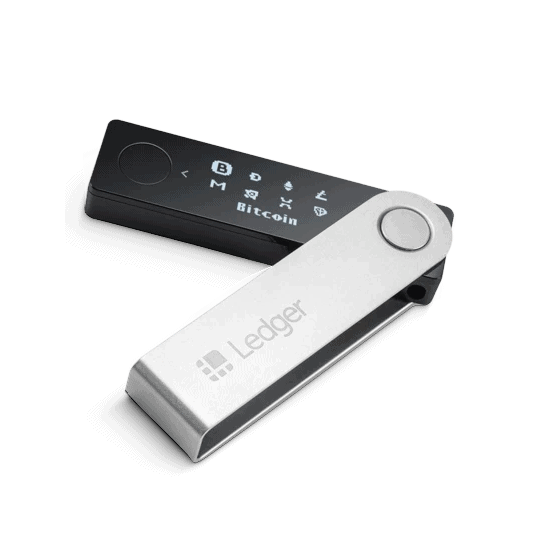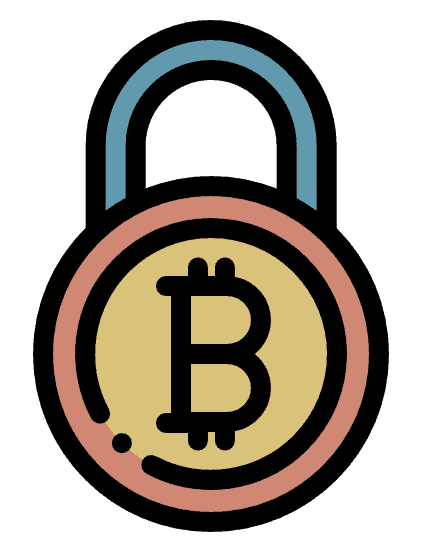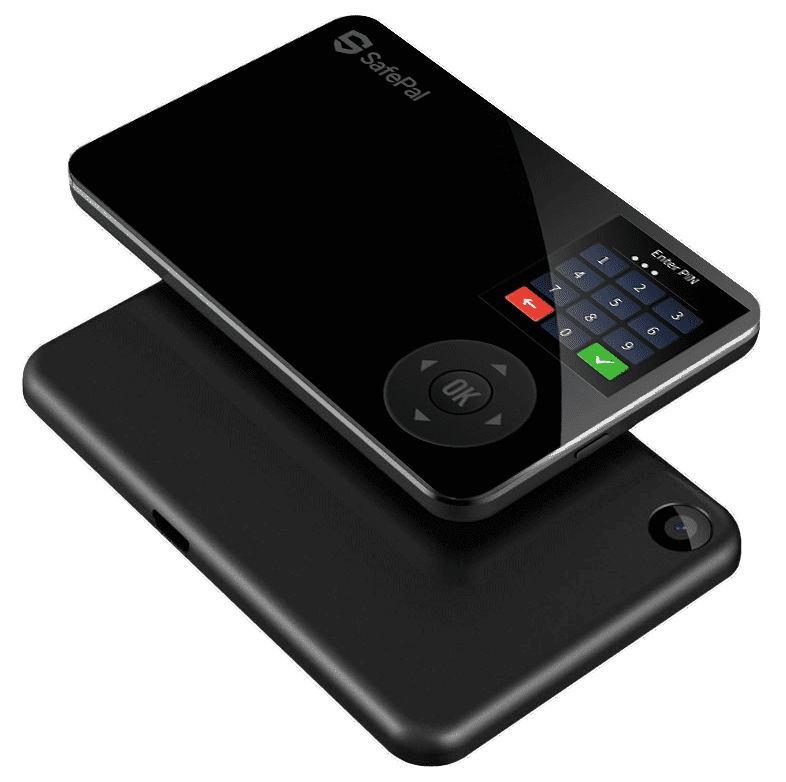Top Cold Wallets – Cryptocurrency Hardware Wallets for 2022
If you’ve been gambling with cryptocurrencies and are starting to get serious about it, getting a hardware wallet is probably the next step you should be thinking about.
Why? What’s wrong with your e-wallet? If you have played slots or table games using cryptocurrency already, then you most likely have what’s called a “hot wallet” – or a software wallet that you have installed on your desktop, tablet or phone.
Hot or cold?
There are two types of crypto wallets you can use. Within these two categories, there are almost countless options like security levels, pricing, UX (an added perk), speed and minimum balance, miscellaneous fees, access to funds, etc.
Hot wallets are designed to be used on the go. They are more convenient than cold wallets because they are there at the click of a button. On the other hand, there is a risk that someone can steal your coins if you keep your hot wallet on your mobile phone.
Some hot wallets may need a fee in order to send or receive bitcoins. This is a trade-off between convenience and security. For example, they may take some time before confirming transactions, but it makes it harder for people with malicious intentions to steal from you – and security checks, authentication, and safety may take time.
Some hot wallets come in the form of an app, some can only be used on your desktop computer (making them safer but a bit less convenient), or an online wallet that you can log into through a third party website – a bit like logging into your bank account through your bank’s website.
Different hot wallets are compatible with different types of cryptocurrencies and offer different types of “perks” to users, like mobile apps, customer support, rewards, gamification (for fun stuff like investing). This is just naming a few.
So why get a cold wallet?
What is a cold wallet?
If you are looking for the safest way to store your crypto, you should probably go with cold wallets. This is because they are not connected to the internet and thus cannot be hacked.
There are 3 types of cold wallets – paper wallets, hardware wallets, and offline software wallets.
Your crypto is only as safe as the place where you store it, but if you are looking for the safest way to store your crypto, you should probably go with cold wallets. Cold wallets are not connected to the internet, which means that they cannot be hacked.
Just like three different types of hot wallets (desktop, mobile and online), people usually recognize three different types of cold wallets. They are paper wallets, hardware wallets, and offline software wallets.
Paper Wallets
A paper wallet is a document that contains all the information related to a particular cryptocurrency. It includes the public key, private key, the seed phrase or the mnemonic phrase, and sometimes also contains additional information like an address.
Paper wallets are typically generated offline on a computer with no internet connectivity. The private keys are then printed on paper for savings purposes so they can be kept safe from hackers and malware.
It kind of sounds like a spy game doesn’t it?
If you want to see an in-depth tutorial on how to make one, take a look at this instructional video.
Hardware Wallets
Hardware wallets are actual physical devices that store your private keys in an offline state, which is what makes them so secure (unless you physically damage them, drop them in the ocean, or burn them). They allow you to carry your cryptocurrency around with you and use it anywhere without internet access.
The most common type of hardware wallet in the market comes in the form of a USB device. These wallets are typically in the form of a flash drive, but some wallets come in the shape of a keychain or card. This type of wallet is usually affordable and easy to set up.
A hardware wallet typically connects to your computer via USB, although some may even come with their own Bluetooth capability for wireless connection
Offline Software Wallets
There is often some confusion when it comes to hardware wallets and offline software wallets – especially when people are just starting out with their adventures in cold wallets or cryptocurrencies in general. Let’s put those to rest:
An offline software wallet can be downloaded onto your computer or mobile device. It should never be connected to the internet and should only be unlocked when you want to use it. The coins are stored on the device itself, so there is no risk of them being stolen or hacked.
A hardware wallet is a physical device where coins are stored offline. Hardware wallets connect to the internet but they require physical access which makes them more secure than an online wallet because hacking requires physical access as well.
In short – one is software that you download and the other one is hardware that you can keep separate from your other devices.
In this guide, we concentrated on hardware wallets. Which ones are the best, the most comfortable, secure, and easy to use, to get, and to store?
What makes a hardware wallet safer than an e-wallet?
We’re not telling you that you should only use a hardware wallet. In fact, it’s best to use a cold and a hard wallet at the same time – storing enough transactional money to play with on your hot wallet and putting away large sums of crypto into your cold wallet.
Think of it more like secure savings, or a bank vault. You wouldn’t put your gambling change in there, but if you happen to win big, or if you decide to expand cryptocurrency investments or savings well beyond gaming and gambling activities, this is where you want to put your money. Away from prying eyes, hackers, and impulse spending.
Your cryptocurrencies are still stored in a blockchain – but your keys are safely offline and inaccessible to anyone but you.
Which hardware wallets are available to me and where do I buy them?
You can buy a hardware wallet anywhere online. Places like Amazon, eBay, or directly on a manufacturer’s website.
Some cold wallets aren’t available anywhere – check if they’re compatible where you live. But if you’re in a country like Canada, the United States, or the UK, you shouldn’t have a problem with compatibility issues.
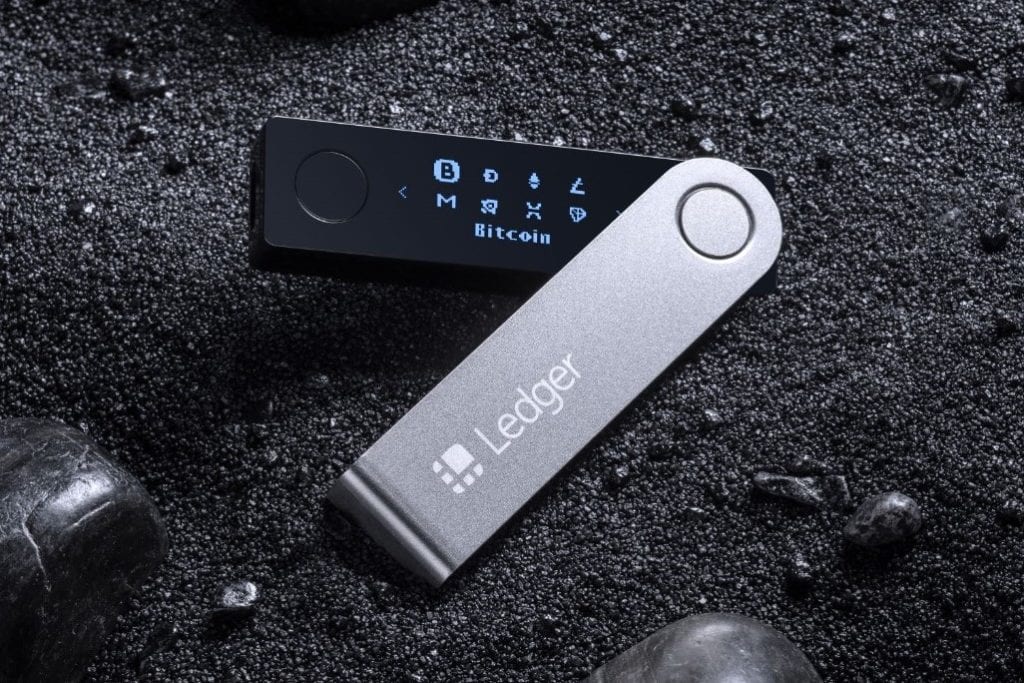
Here are our top hardware wallet choices for 2022
Ledger Nano X
The Ledger Nano X is considered to be very ahead of the rest of the pack indeed. It’s very mainstream and well-known, recommended by Bloomberg, Forbes, and TechCrunch.
It might look like an old-school USB stick, but it has its own screen and Bluetooth capability, to connect straight to your smartphone. It allows you to install a hundred different apps – meaning you can collect an impressive amount of different types of cryptocurrency.
Ledger is a robust company with over 140 employees and offices in both San Francisco and Paris. Talk about combining beauty and tech-savvy brains. Upon purchase, they will also supply you with a 25 USD voucher and a cryptocurrency beginners’ guide in PDF form.
Ok, but what makes it better?
- Capacity and compatibility (it can store just about any cryptocurrency).
- Help – it offers support and instructions, both in downloadable forms and online troubleshooting.
- The only operating system that was made by Ledger in-house. This means that they don’t depend on anyone for their operating system needs, making this a hard nut to crack or hack. This makes it one of the absolute safest hardware wallets out there.
- Versatility – it’s supported by most desktop operating systems – Windows 8 and up, Mac OS 10.8, and even Linux. For mobile devices, it’s supported by Android 7 and up, and iOS 9 and up.
- Bluetooth connection – not all hard wallets have this, and boy is it convenient.
The potential downsides:
You might have heard that Ledger had some security issues in 2020. It had nothing to do with their actual cryptocurrency safety – nothing got stolen. But the names of some customers as well as their physical addresses got leaked in a data breach. It’s possible that this information won’t even be required for an account in the future. After all, why would it?
Another potential downside to those just starting out is the price. Yes, the Ledger Nano X is more expensive than a lot of hard wallets. As is usually the case, there are some pretty good explanations behind this high price (119 USD) – you’re paying for this wallet’s capacity, BlueTooth capability, and large screen. You’re basically investing in all the things that make this piece of hardware the best option. If you feel like that’s too much for you, there’s also the Ledger Nano X’s little brother (or sister) – the Ledger Nano S. Read on:
Ledger Nano S
The Ledger Nano S comes from the same company that the Ledger Nano X – but we bet you already figured that out. It has a much more approachable price range (59 USD). It still appears on almost all “best hardware wallet” lists that we have looked at. Why?
What makes this a great cold wallet?
This is a great hardware wallet for starting out your crypto adventure. We recommend using it if you don’t want to spend over 100 USD on all the extra bells and whistles but need a secure, no-nonsense device to store your extra cryptocurrencies on. With 160kb of storage, it has room to hold up to 3 cryptocurrencies of your choice (compared to Ledger Nano X’s 100). Most beginners experiment with limited types of cryptocurrencies and tend to have favorites.
One of the definite pluses of the Nano S is that it comes in a variety of different colors. Yes – you can order it in a few shades of pastel, while the Nano X only comes in Matte Black. This is a good option if you’re opting for the more expensive family plan. Ledger actually offers three Nano S devices for 139 USD in a family pack. It’s perfect if your whole family wants to play the crypto game, or if your gambling buddies are like family to you and you want to go in together.
The safety in the Nano S is superb – it uses a different kind of chip than the Nano X, but both technologies are top of the line and have been.
Potential downsides:
- No BlueTooth – you have to connect via cable
- No iOS support – Android only
- No extra battery life for the screen

Trezor Model T
Although it sounds like a car that comes in any color you want, the Trezor Model T is considered one of the best hardware wallets out there right now. It’s made by Satoshi Labs, which is a company famous for crypto technologies – in fact, it’s pretty famous for making the world’s very first cryptocurrency cold wallet. They did it first, and they’re still in the game strong.
Despite their Japanese-sounding name, Satoshi Labs are based in none other than Prague, Czechia. Maybe you have heard about their ambitious and useful project, Coinmap – a map of all cryptocurrency ATMs and merchants in the world.
What makes their hardware wallet so great?
If you’ve been watching the BlueTooth trend on the hardware wallet market, or if you’ve just heard about it and have been skeptical of its safety, this cold wallet is for you. It doesn’t have the BlueTooth option, and instead, it connects via cable. This device is powerful, and can store 1,000 coins – so if you’re absolutely sure that you need a hard wallet that can take a lot of traffic, experimenting, and variety, this is definitely the one for you.
The minuses:
Of course, all that capacity has got to cost money. This is one of the priciest hard wallets out there, costing about 200 USD. But you get what you pay for – storage, lots of coin possibilities, and most importantly, security. This wallet is also a bit harder to set up than others, and a lot of people seem to gripe that you can’t see all your different coin balances on one screen – you have to go coin by coin. One of the minuses for us is that it looks a bit like a garage door opener – but not everyone can be as slick as the SafePal S1. Read on:
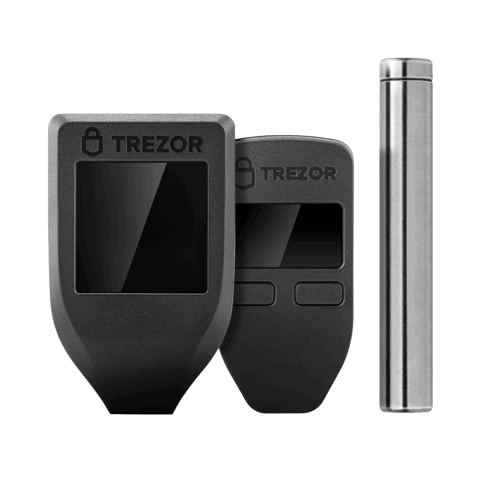
SafePal S1
This is a device made by Binance Labs.
This device is cool and looks very slick – it’s a great choice for beginners, and this is why it’s on our list. Not everyone needs the full enchilada, and this hardware wallet can be yours for 39 USD – it’s perfect if you’re into Bitcoin, Ethereum, Binance Coin, and ERC-20 tokens – these are the ones that SafePal S1 supports, and that’s the end of that. Since quite a lot of crypto gambling newbies start their journey with either Bitcoin or Ethereum, this is a great starter option.
As SafePal says, “no wifi, no BlueTooth, no NFC, no USB connection” – you’re probably wondering how you connect this wallet to the outside world?
When we read the reviews, over 96% of users were completely satisfied. If we were starting out in crypto today, this would most likely be our first choice of a cold storage unit.
Here are some major plusses:
- It is 100% offline
- It senses malicious attacks and attempts at forced entry, automatically launching self-destruct (don’t worry, it won’t explode in your pocket, it will simply wipe data that could be compromised)
- Built-in random number generator, sure to be appreciated by true gamblers
- Very easy to set up and navigate
- Touch screen
Some negatives:
- Many people complain about the keyboard – it’s a bit clunky
- Not many people like to input the 4 digit pin every time they use it but hey – it’s for safety’s sake
Overall, this one has won our vote for the best beginner choice out there.
Any hardware wallet that you get will come with a set of instructions – either in a booklet or a PDF that can be downloaded from a manufacturer’s website.
I’ve gotten my hardware wallet! Now what?
Some people will say that your cold wallet is 100% safe only when not connected to the internet – and in order to make a transaction, you have to be connected to the internet, making yourself open to hackers.
It’s not really about hackers getting into your wallet. It’s about hackers getting into your computer, laptop, or phone. Phishing websites or malware can help hackers get at your money, and this can happen after systematically watching what you do online for a long time. Some hackers are skilled and patient. The solution is to keep all your devices safe with regular upkeep and anti-malware and anti-virus software.
This is exactly the reason that cold wallets are safe – because, in addition to many other safety features, your keys are offline 99% of the time – unless you’re physically plugged in. Most cryptocurrency hacks and thefts from larger networks – if they do happen, go after hot wallets.

Final Words
We’re glad that you took the first steps in gambling with cryptocurrencies – it’s fun, and you get to learn a lot about technologies that will probably be more mainstream in the future. If you like both playing and learning, then the time is now. We hope you found our short guide helpful!

